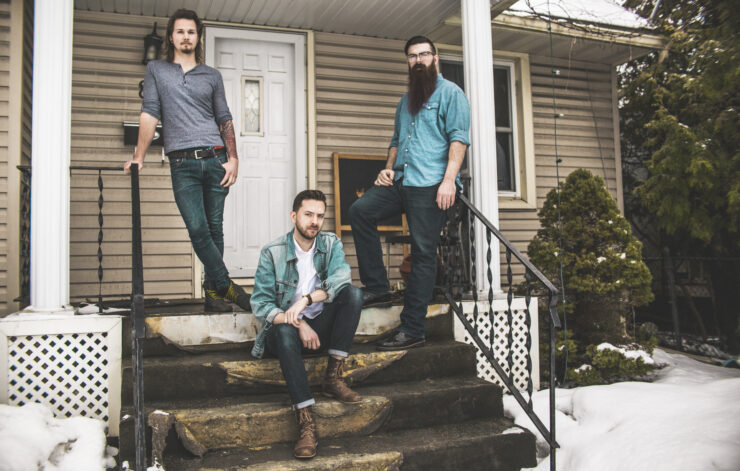Executive committee, board of directors also elected
The referendum held by the University of Ottawa Students’ Union (UOSU) to determine whether it could continue to collect existing student levies previously implemented by the Student Federation of the University of Ottawa (SFUO) passed on Apr. 5, with four in five voters in favour. Election results for the union’s executive committee and board of directors were also announced.
“Less than (seven) months ago a group of students sat on a call and knew they needed to mobilize,” Tiyana Maharaj, one of the union’s founding organizers, posted to Twitter late Apr. 5. “For the past few weeks our team has been working tirelessly, day and night, to create a foundation and secure our services, and tonight 82.8 (per cent) of students believed in us.”
The election and referendum, which ran from Apr. 3 until Apr. 5., saw about a 16 per cent voter turnout rate and took place online via an email sent out to U of O student accounts. The turnout was significantly higher than past SFUO elections: In 2016 just below 8 per cent of students voted, while in 2015 this number was about 11.5 per cent. Data on voter turnout was not available for the 2017 or 2018 SFUO elections.
The referendum asked students if they were in favour of the UOSU collecting student levies. While students could only answer yes or no to all fees, they were broken into two categories in line with the Progressive Conservatives’ Student Choice Initiative (SCI) announced in January: essential and non-essential.
Essential fees, which are mandatory for all students to pay with tuition, total $67.07 per semester for full-time students or $36.79 for part-time students. The fee includes funding for union operations, health and wellness, academic support, financial aid, athletics and recreation fee, and central services, including the Career Development Centre, the Student Academic Success Centre, and the office of the Ombudsman.
The UOSU will also collect an annual health insurance fee of $245, an increase of about $10 from the SFUO’s system. The fee is deemed mandatory under the SCI but optional for students with existing coverage.
On the other hand, students will be able to opt-out of non-essential fees when paying tuition. These include a student life fee of $23 for full-time students or $11.50 for part-time students, covering clubs, faculty associations and student orientation. Also included is a collection of $14.25 from full-time students and $10.30 from part-time students on behalf of campus media and the Ontario Public Interest Research Group for funding.
The U-Pass, which students pay $415.05 for yearly, was not impacted by the referendum as the program is run by the U of O’s administration and not the student union.
Election results
Election results were also announced, cementing the union’s founding executive committee: The four uncontested candidates, Sam Schroeder (advocacy commissioner), Natasha Lyne Roy (Francophone affairs commissioner), Rony Fotsing (operations commissioner), and Jason Seguya (student life commissioner), were all voted in. Seguya is the only executive who was previously involved with the SFUO, where he was promotions officer. The equity commissioner position remains vacant.
The UOSU’s board of directors is also beginning to take shape but many voids remain. Just 14 of the 22 seats were filled, with vacancies in the faculties of education, law (common law), health sciences, arts, engineering, and science.
Barbacar Faye, Jane Dukes, Zaina Abusayma, and Zachary Robichaud won the four available seats for the faculty of social science while Bobby Wong, Alex Ishibi, and Sammy Najm won all three seats for the Telfer School of Management. Safa Saud won one of the seats for the faculty of arts, with two remaining vacant, while Kimberley Paradis took one of the three seats for the faculty of engineering.
Sarah Aly won one of the two seats for the faculty of health science and Jinnia Baiye and Noura Aminata Belem took two of three available in the faculty of science. Celina DeBiasio and Jeremy Turbide-Chiasson took the only seats for the faculty of medicine and faculty of law (common law) respectively.
Meet the UOSU
The UOSU came to power in February when they beat out the SFUO in a referendum to select which organization would be recognized as the sole union representing undergraduate students at the U of O. Three-quarters of voters chose the UOSU over the SFUO.
The U of O terminated its contract with the SFUO in December 2018 after allegations of financial mismanagement, workplace misconduct, improper governance, and internal conflict came to light, spurred by allegations of fraud first broke by La Rotonde and then the Fulcrum in August 2018. A forensic audit from November 2018 into the SFUO’s financials, conducted by PwC, did not find fraud but highlighted the SFUO did not have a conflict-of-interest policy.
The UOSU’s structure differs from the SFUO.
While the board of administration had historically been the SFUO’s highest governing body up until a few months before the termination date, the UOSU has made the General Assembly (GA), which all undergraduate students are a part of, the top dog instead. Students can override a vote from the board, save decisions related to hiring and firing.
The UOSU has opted for a system of commissioners of equal power who work for mandates rather than a system of presidents and vice-presidents, which they said will prevent a hierarchy from coming into place. They also have said they will hire an external and independent professional accountant to work with the GA to manage the union’s budget and finances.
—With files from Eric Davison, Anchal Sharma and Savannah Awde
Updated Apr. 6, 12:00 p.m. to include the names of candidates elected to the board of directors, along with more background on voter turnout and the UOSU’s governance structure.





